US-Sport
NBA: Olajuwon: More than a Dream
Hakeem Olajuwon celebrates his 55th birthday. Birthday! On this occasion: A new look back at the unique story of the man they called “The Dream”.
The 1984 vintage of the NBA-Draft is considered to be the best of all time. Charles Barkley, John Stockton and of course Michael Jordan started their careers this year.
A Nigerian center from Nigeria, which only started playing basketball at the age of 15, was still considered a big prize. And to this day, no one complains that the Houston Rockets went to Olajuwon with the first Pick Akeem (then still without H), even though the best basketball player of all time would have been available.
So Olajuwon must have had a very impressive career. And really: two NBA titles, two finals MVPs, MVP of the regular season, two defensive players of the year, twelve times All-NBA team. These are only the most important awards – today Olajuwon’s letterhead fills a whole DIN-A-4 page. Even more fascinating, however, was the path that brought him to the NBA.
As a young man, Akeem was not interested in basketball, but in Nigeria’s popular sport of football, hockey and handball. In these sports, he developed the footwork that would later make him legendary. At the age of 15 – meanwhile he was already two meters tall – a basketball coach persuaded him to try the orange leather after seeing him play handball – and things started rolling. A deus ex machina of a special kind.
Olajuwon took up the new sport quite naturally and was able to maintain the great footwork despite the continued growth. In addition, he showed the necessary ambition to declassify the competition and to work constantly on himself. So it happened that he wanted to move to the USA to work on his game at college. He received a scholarship from Houston University and led her to the NCAA Final Four together with Clyde Drexler in each of his three college years.
Until he moved to college, there were several ways in which Olajuwon’s career could have been prevented. What would have happened if a basketball player hadn’t just happened to see handball player Akeem and thought:”The boy should try basketball”? If he simply would not have wanted to do this? Or if his talent hadn’t adapted to the constantly growing body, so he would have lost his footwork?
Olajuwon also demonstrated an almost impertinently happy hand in the college election. In Houston at the time, a certain Moses Malone was playing with the Rockets, one of the best centers of all time. After meeting Olajuwon in a public gymnasium, he took him under his wing – something better cannot happen to a young center.
In 1984, he then moved to the NBA. With his infinitely versatile game, Olajuwon filled the statistics sheets at both ends of the field from the very beginning and became All Star in his first year. Together with Ralph Sampson (2.21 m), who was picked up a year earlier, Olajuwon (2.13 m) was the first combination of teamates since Wilt Chamberlain and Elgin Baylor, where both players played more than 20 points and ten rebounds.
Already in their second season together, the “Twin Towers” led Houston into the NBA finals. In the West they threw out the “Show Time”-Lakers, an absolute sensation at that time. Olajuwon played an average of 35 points against the aging Kareem Abdul-Jabbar in the last three games. Laker’s icon Magic Johnson ennobled the young center afterwards:”When it comes to raw athletic skills, Akeem is the best I’ve ever seen.”
Mitch Kupchak described Olajuwon even better:”I might compare him to Alvin Robertson in the sense that he can do anything on the field. That says a lot, because Robertson’s a guard. I’ve never seen anyone so strong, so fast and so untiring, and at the same time 2.13 m tall” In the final the Celtics were too big for Larry Bird, but the rockets seemed to be the team of the hour.
However, the star of the “Twin Towers” sank just as quickly as it had risen. That wasn’t because of Olajuwon. On the contrary: In 1986/87 he led his team in unbelievable 13 categories, including points, rebounds, steals and blocks. Ralph Sampson, on the other hand, has been struggling with injuries from this season onwards and has never returned to the performances of his early career. In the following season he was traded to Golden State.
Olajuwon was now on his own. Between 1987 and 1995 he played with exactly one other All Star (Otis Thorpe) and began to complain about the situation and his team mates in Houston. He continued to lay down fabulous statistics, but was unable to lead his team past the first playoff round. Out of frustration he fought again and again with opponents and referees and got into several fights on the field.
Trade rumours about Olajuwon were already circulating in 1991. In the same year, however, he underwent a change of name from Akeem to Hakeem, which was symbolized by the change of name from Akeem to Hakeem: he devoted himself more to his religion again, fasted during Ramadan every season from then on, and apparently found a way to overcome his frustration through his play. More inner calm was the result. During the 91/92 season Rudy Tomjanovich had a new coach, but the playoffs were missed for the first time in the Olajuwon era. But from then on things went uphill.
In the 92’s draft Robert Horry joined the team, followed a year later by Sam Cassell and Mario Elie. Olajuwon finally had a good team at the perfect time. Before the 93/94 season Michael Jordan announced his first retirement from basketball. The Alphatier of the league had become tired after three titles in a row and was looking for a new challenge in baseball. Appearance: Hakeem Olajuwon!
With a team built around him, Olajuwon marched straight into the NBA finals with a team of good shooters to make room in the middle. During the regular season he won the MVP-Award and became Defensive Player of the Year. In the final Houston won the title against the Knicks for their star Patrick Ewing after seven contested matches. This was the first major center rival to be defeated. Two more were to follow shortly afterwards.
After the first title, there was a significant change in the Rockets squad. Otis Thorpe was handed over to Olajuwon’s old fellow student Clyde Drexler during the season. In the regular season, however, the champions had a hard time of it, with Houston only finishing sixth in the West. So the rockets didn’t have a home advantage in the playoffs, but that was obviously no problem.
Initially, the Jazz and Suns were beaten narrowly. What followed were two of the most one-sided star duels in the league’s history. Before the Conference Finals Spurs-Center David Robinson received the MVP-Award for the Regular Season. A choice that Olajuwon apparently missed out on a boost of motivation and that he led ad absurdum during the series.
He dominated the opponent at will, suffocating him with his defense and playing him with his “Dream Shakes” knots. A Youtube video with the fitting title “Olajuwon Dominates Robinson” shows the duel of the two in all its one-sidedness. Robinson later admitted that he simply did not want to come up with a solution to the problem of hakeem. The experts agreed that there has rarely been a better performance in a playoff series.
The next opponent was similar to Robinson “He has about five moves, which he can counter with four moves each. These are a total of 20,” said the young Shaquille O’ Neal, who has just received several lessons from Olajuwon and was swept into the finals with his Orlando Magic,”The Dream” had just won his second final MVP title and clearly showed the three biggest rivals in less than 13 months who was wearing the trousers in the center position.
The rockets didn’t make it to the finals later on. 97 was enough for the conference finals again, but there they failed because of the eternal Utah duo Karl “Pick” Malone and John “Roll” Stockton. Olajuwon was traded to Toronto in 2001 – after 20 years of basketball in Houston – where he ended his career after one season. He resigned as the player with the most blocks of NBA history.
And to this day, the name Hakeem Olajuwon is still very common in NBA circles. Several current stars have paid him in recent years to give them training in footwork and post-moves. Kobe Bryant sought him out in order to keep his game effective even as he grew older and to make him less dependent on his speed. LeBron James had Olajuwon help him fix his last major weakness with the game at the edge of the zone – just imagine that “The Dream” would have stayed with handball.


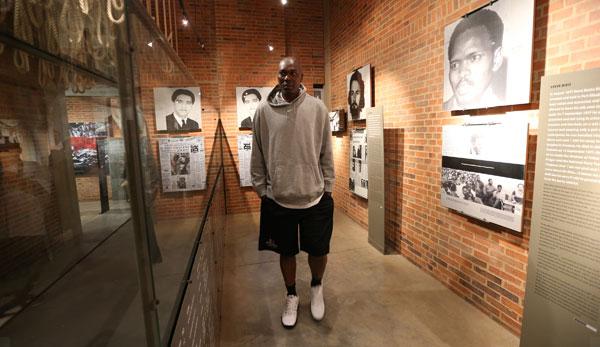
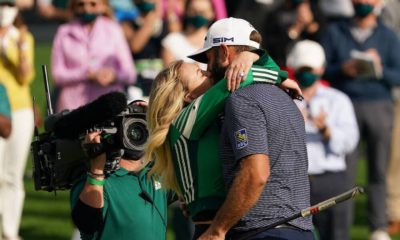
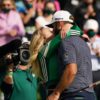
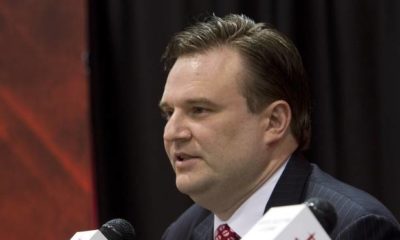
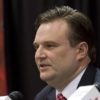
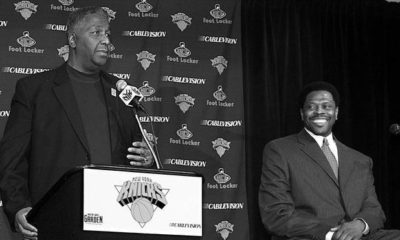
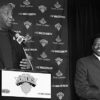
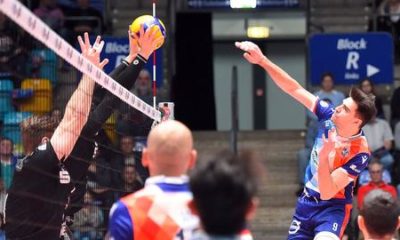
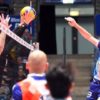
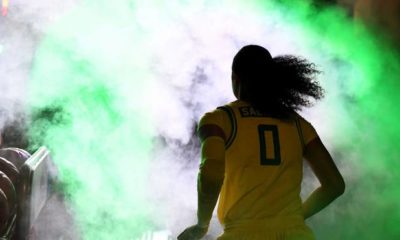
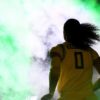





You must be logged in to post a comment Login